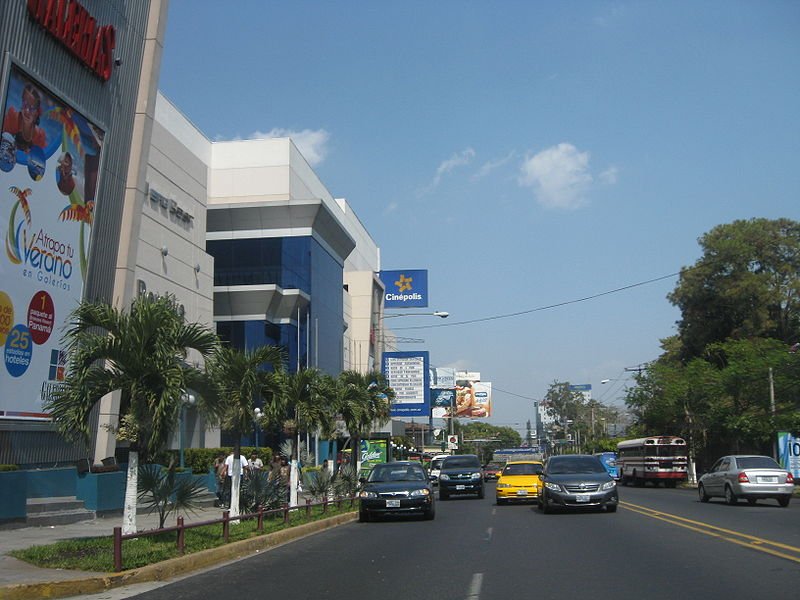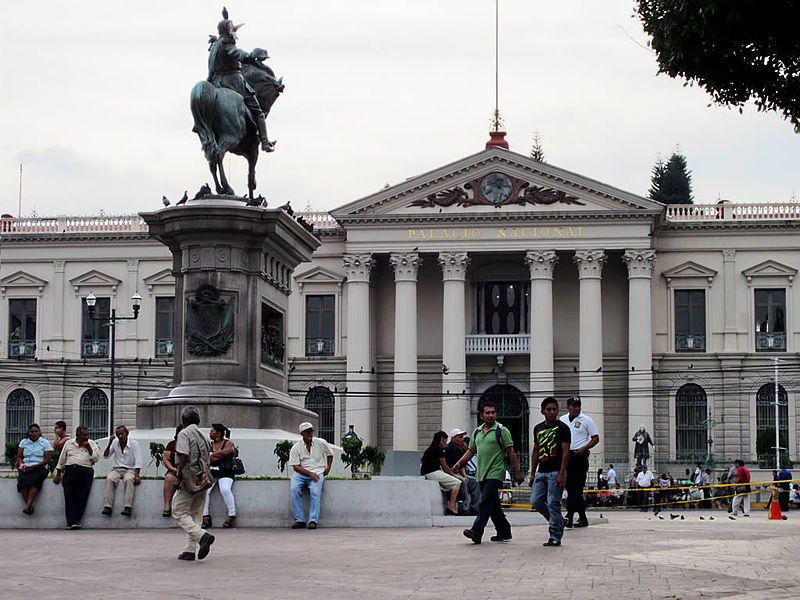 San Salvador, El Salvador
San Salvador, El SalvadorSource: https://commons.wikimedia.org/wiki/File:Urban_2_Devlopment.JPG
Author: Samsamofvador

San Salvador is the capital and biggest city in El Salvador. The city located in a valley in the central part of the country is officially known as La Ciudad de Gran San Salvador, meaning "City of the Great Holy Savior". It covers 72.25 sq km (27.9 sq mi) and has a population of 541,000 people (2011 estimate), within a metropolitan area of 2.3 million people.
San Salvador is 658 m (2,159 ft) above sea level. Local geological features include hills, mountains, a volcano and a caldera lake. The city experiences the tropical wet and dry climate. The dry season is from November through April while the wet season is from May through October. Temperature is fairly constant throughout the year, from a low of 15.1°C (59.2°F) in December to a high of 32.2°C (90°F) in April. September gets the most rain, at 348 mm (13.7 in).
Human habitation of the San Salvador area goes back to pre-Columbian times. It was a city called Cuzcatlán, the capital of the Pipil people. The city was abandoned when the Spanish advanced into the area.
 Historic Centre of San Salvador
Historic Centre of San SalvadorSource: https://commons.wikimedia.org/wiki/File:Centro_historico_san_salvador.jpg
Author: Maranon68

The modern city of San Salvador was established by Spanish conquistador Pedro de Alvarado on 1 April, 1525. Originally located further north, where the archaeological site of Ciudad Vieja is today, San Salvador was relocated in 1545 to its present site. It was just a small town until the early part of the 20th century.
The city has witness a number of calamities, both natural and man-made. It was hit by a massive earthquake in 1917. Politically, it survived the ouster of presidents, a coup d'état in 1931 and a civil war that began in the 1980s and raged for 22 years. Today San Salvador has a rich concentration of historic buildings, particularly in its downtown area. Among the important sights in the city include the National Theater, the Art Museum, National Museum David J. Guzmán, the Luis Poma Theater and the Children's Museum.
 National Palace, San Salvador
National Palace, San SalvadorSource: https://commons.wikimedia.org/wiki/File:National_Palace_(7185451772).jpg
Author: David Stanley

Visiting San Salvador
Overseas visitors arrive at Comalapa International Airport (SAL), located 45 minutes from downtown San Salvador by car. You can reach the city by taking a local bus, which costs $0.70 and takes an hour. To move about in San Salvador, you can rely on the taxi, but be sure to negotiate the fare before getting in.Places of Interest in San Salvador
- La Laguna
Botanical gardens near the US embassy. - Monumento al Divino Salvador del Mundo
Monument at Plaza Las Americas. - Museo de Arte de El Salvador
Museum with an extensive collection of art by both local and foreign artists. - Museo Nacional de Antropología "Dr David J. Guzmán"
The national museum of anthropology in San Salvador. It contains Maya and Pipil artifacts from around the country. - Tin-Marin
Children's museum, where children can gain knowledge in a fun and interactive way.
 Latest updates on Penang Travel Tips
Latest updates on Penang Travel Tips

Copyright © 2003-2025 Timothy Tye. All Rights Reserved.

 Go Back
Go Back